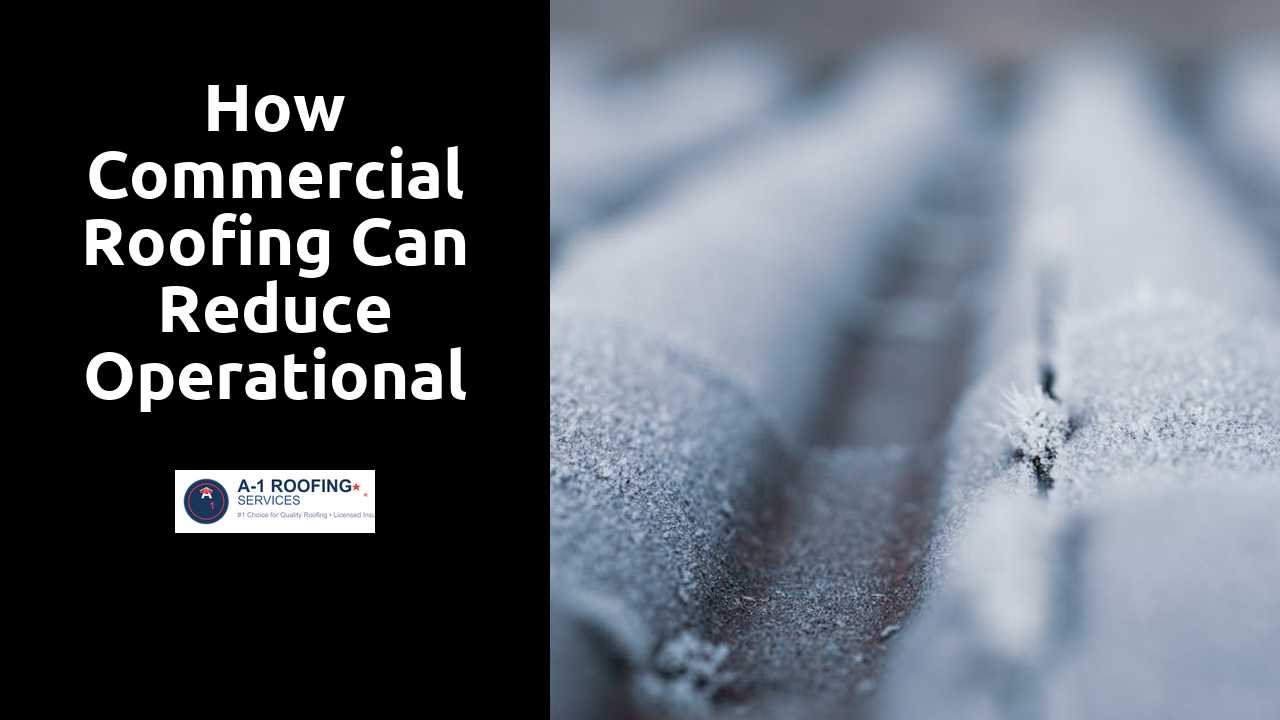
How Commercial Roofing Can Reduce Operational Costs
Table Of Contents
Tax Incentives and Rebates for Energy-Efficient Roofing
Implementing energy-efficient roofing solutions can lead to significant financial advantages for businesses. Many states and the federal government offer tax incentives and rebates aimed at encouraging the adoption of such environmentally friendly practices. These programs often include deductions for energy-efficient upgrades and direct rebates that help offset the initial investment costs. Businesses that take advantage of these financial benefits can experience a substantial reduction in their overall expenses.
In addition to tax breaks, some utility companies provide rebates for businesses that install energy-efficient roofing systems. These incentives are designed to promote reduced energy consumption and lower operational costs over time. By investing in energy-efficient roofing, companies not only contribute to sustainability efforts but also improve their bottom line through long-term savings. The financial landscape surrounding energy-efficient roofing is continually evolving, making it crucial for business owners to stay informed about the latest opportunities.
Click here for additional info.
Understanding Available Financial Benefits
Navigating the financial landscape of commercial roofing can reveal various opportunities for businesses looking to enhance their bottom line. Tax credits and deductions related to energy-efficient roofing upgrades can significantly reduce upfront costs. Additionally, manufacturers often provide rebates for installing specific environmentally friendly materials, incentivizing companies to pursue these sustainable options. Understanding these financial benefits can empower business owners to make informed decisions that support their operational expenses.
Utilizing energy-efficient buildings can also yield savings through reduced energy bills. Many utility companies offer programs that reward businesses for adopting energy-saving practices, further enhancing overall savings. These programs can be essential for commercial property owners, as they not only improve operational costs but also contribute to long-term financial sustainability. By exploring and leveraging these benefits, organizations can align their roofing investments with broader economic goals.
Green Roofing Options for Sustainability
Sustainable building practices are increasingly incorporating green roofing options as a viable solution. These systems can include living roof assemblies that support vegetation, providing numerous environmental advantages. They significantly enhance insulation, improve air quality, and promote biodiversity by creating habitats for various flora and fauna. Additionally, green roofs can reduce stormwater runoff, leading to a lower risk of flooding and decreasing the burden on urban drainage systems.
The implementation of green roofing options also contributes to energy savings. By reducing the ambient temperature in urban areas, these roofs can minimize the heat island effect, which often leads to increased energy consumption for cooling. This leads to lower utility bills and a smaller carbon footprint. Property owners who invest in green roofs may also find increased property values and improved aesthetics, making them a compelling choice for sustainability-conscious businesses.
Benefits of Implementing a Green Roof System
Implementing a green roof system provides numerous environmental advantages. These roofs support biodiversity by creating habitats for various plants and wildlife. They also contribute to improved air quality, as the vegetation helps filter pollutants and absorbs carbon dioxide. Furthermore, green roofs can effectively manage stormwater, reducing runoff and decreasing the risk of flooding in urban areas.
Economic benefits accompany the environmental gains of green roofs. By providing additional insulation, they enhance a building's energy efficiency, leading to lower heating and cooling costs. The durability of green roof systems can also result in reduced maintenance expenses over time. Property values often increase as well, as green roofs are attractive features for tenants and buyers looking for sustainable living spaces.
Technology and Innovation in Commercial Roofing
Advancements in technology are reshaping the landscape of commercial roofing. Building materials have seen significant enhancements with the introduction of lighter, more durable options that offer better thermal performance. Innovative roofing systems now incorporate features such as reflective coatings that reduce heat absorption, leading to lower energy consumption. Smart roofing technologies are emerging, allowing for real-time monitoring of roof conditions and energy efficiency.
Incorporating sensors and IoT devices into roofing systems enables facility managers to track temperature, moisture levels, and potential wear. These innovations facilitate preventative maintenance and help avoid costly repairs down the line. Additionally, automation in installation processes improves safety and reduces labor costs. As commercial properties seek to optimize operational efficiency, these technological strides present a compelling opportunity for businesses to modernize their roofs.
Smart Roofing Solutions and Their Operational Benefits
Modern advancements in roofing technology have given rise to smart roofing solutions that optimize the performance of commercial buildings. These innovative systems utilize sensors and data analytics to monitor factors such as temperature, humidity, and structural integrity. By gathering real-time information, building managers can make informed decisions about maintenance and energy usage, significantly enhancing operational efficiency.
Incorporating smart roofing solutions can lead to reduced energy consumption and lower utility bills. By optimizing heating and cooling systems, these roofs minimize waste and promote a more sustainable environment. Additionally, the ability to predict maintenance needs fosters longevity in roofing materials, thus reducing long-term costs associated with premature roof replacements or repairs. Sustainable practices combined with technological integration create a framework for efficient building management.
Related Links
The Link Between Commercial Roofing and Business AestheticsBenefits of Weather Resistance in Commercial Roofing